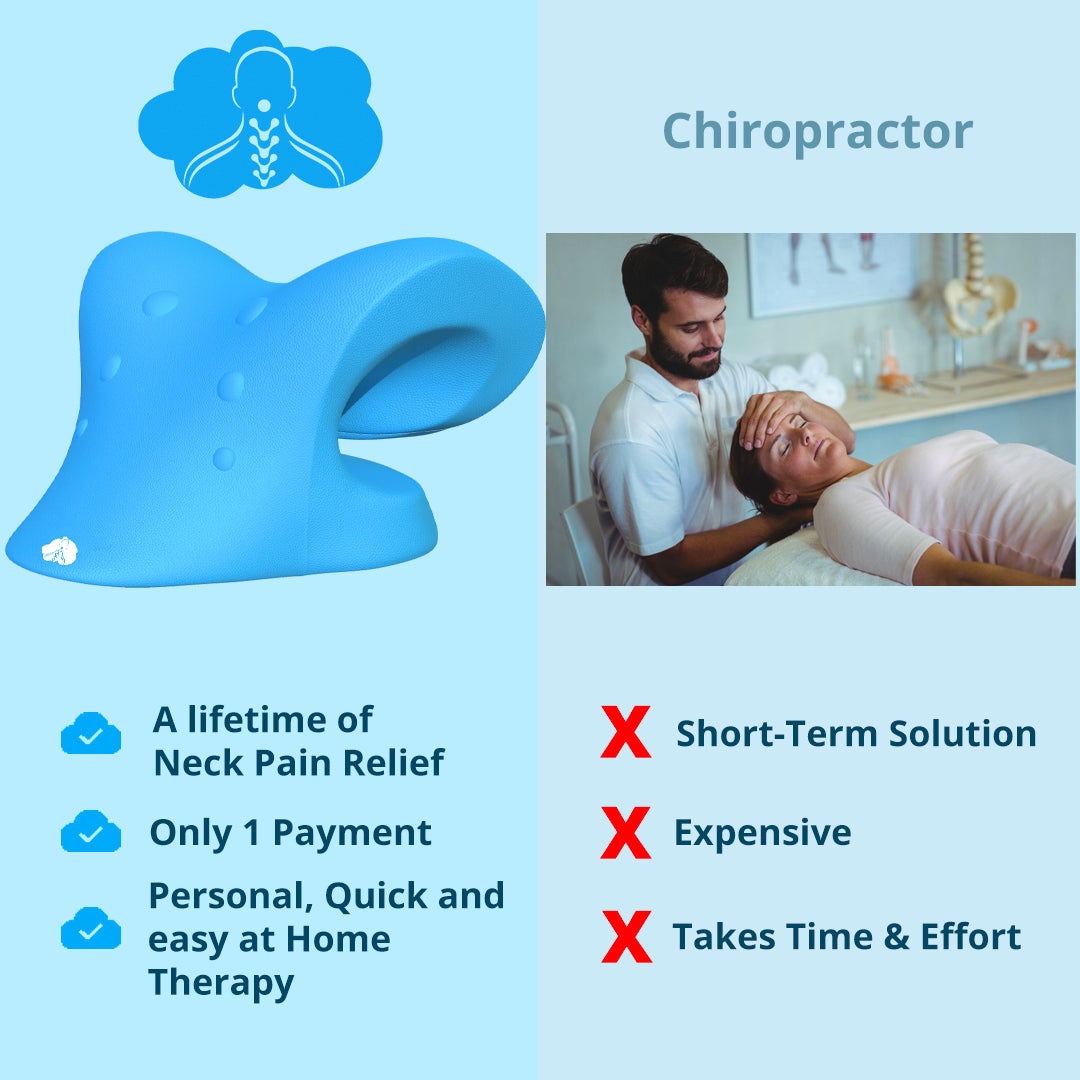Neck Cloud for Cervical Support: Kick Back and Eliminate Neck Discomfort
Neck Cloud for Cervical Support: Kick Back and Eliminate Neck Discomfort
Blog Article
Neck Pain in the Office: Determining Danger Aspects and Implementing Ergonomic Solutions
Neck pain in the work environment is a prevalent problem that can affect worker wellness and productivity. By recognizing the different threat aspects adding to neck discomfort and applying ergonomic services, companies can create a more conducive job atmosphere. Identifying these elements is vital in creating targeted strategies to reduce pain and avoid future injuries. Resolving ergonomic worries not just improves staff member health however likewise promotes general task complete satisfaction and efficiency.
Common Reasons For Neck Discomfort
Neck pain in the office is a common concern that can be associated to numerous common causes. Additionally, recurring activities such as constant bending, turning, or getting to can additionally contribute to neck discomfort over time.

Ergonomic Threat Factors
Poor comfort designs in the workplace can substantially add to neck pain amongst employees. Variables such as improper desk elevation, poor chair assistance, and uncomfortable positioning of computer system monitors can all play a role in the advancement of neck pain. When employees are compelled to sit for extended durations ready that stress their neck muscular tissues, it can bring about rigidity, discomfort, and even much more serious bone and joint problems over time.
In addition, poor ergonomic techniques can cause staff members embracing unpleasant postures while working, such as craning their necks to see a computer system screen or getting to uncomfortably for a mouse or key-board. neck cloud. These repeated activities and unnatural positions can put undue tension on the neck and surrounding muscles, bring about pain and reduced efficiency

Workdesk Arrangement Recommendations
When establishing a desk in the workplace, it is vital to take notice of the comfort designs of the setting. To minimize the danger of neck pain and discomfort, there are several desk configuration recommendations that employees should consider. Firstly, make sure that the computer display is placed at eye degree to avoid stressing the neck by searching for or down. The key-board and computer mouse need to be put at a height where the elbow joints are curved at a 90-degree angle to advertise proper wrist positioning. In addition, the chair height should permit the feet to relax flat on the flooring with upper legs parallel to the ground.
It is likewise important to have ample lighting to reduce eye pressure, as scrunching up your eyes or leaning forward can bring about neck stress. Arrange the desk layout to maintain regularly utilized things within arm's reach, limiting the need for recurring turning or getting to movements. By carrying out these desk arrangement suggestions, workers can produce a much more ergonomic work space that supports neck wellness and minimizes the threat of developing work-related neck discomfort.
Stretching and Workout Tips
To preserve adaptability and reduce muscle tension in the workplace, including stretching and exercise regimens can be advantageous for general health and efficiency. Straightforward desk-friendly stretches can assist alleviate neck pain and avoid stiffness. Neck rolls, shoulder shrugs, and mild side-to-side neck stretches work in eliminating stress. In addition, integrating exercises like chin tucks, shoulder blade squeezes, and top back stretches can help enhance muscle mass that sustain great stance.
It is essential to take time-outs throughout the day to do these workouts. Establishing site web reminders or making use of applications that trigger activity can aid develop a routine extending regimen. It is necessary to listen to your body and prevent overstretching, especially if you are new to these exercises. Consistency is crucial, so aim to integrate stretching and workout right into your day-to-day job routine. By focusing on these tasks, you can boost your physical wellness, minimize the danger of neck discomfort, and enhance your general productivity in the work environment.
Value of Routine Breaks
In a fast-paced workplace where demands can add to physical pressures like neck pain, developing a routine that stresses the importance of regular breaks is paramount (neck cloud). Taking regular breaks throughout the day is important for easing and preventing neck pain. Extended durations of resting or recurring tasks can lead to muscle stress and rigidity in the neck and shoulders. By integrating brief breaks into the job routine, employees can lower the danger of developing neck pain and enhance total comfort and performance.
Regular breaks permit workers to relax their muscle mass, stretch, and turn, preventing helpful resources stiffness and promoting better flow. Encouraging staff members to take brief breaks every 30-60 minutes can help in reducing the accumulation of tension in the neck and shoulders. These breaks can additionally serve as an opportunity for workers to practice relaxation methods or gentle neck stretches, better advertising bone and joint wellness. Carrying out a society that values and prioritizes routine breaks can have a considerable influence on lowering neck discomfort and improving overall wellness in the office.
Final Thought
In verdict, addressing ergonomic risk elements and executing appropriate workstation arrangements are essential in minimizing neck pain in the work environment. By promoting great position, giving sufficient support, and encouraging normal breaks and stretches, companies can develop a much healthier and a lot more effective workplace for employees. published here Prioritizing employee well-being through ergonomic options is essential to stop pain and enhancing overall workplace fulfillment.
Neck pain in the workplace is a widespread concern that can impact staff member health and efficiency. By determining and dealing with these common causes of neck pain in the work environment, companies can take positive steps to create a much more comfy and ergonomic job setting for their workers.
Poor functional designs in the workplace can dramatically add to neck discomfort amongst staff members. By applying these workdesk configuration suggestions, staff members can produce an extra ergonomic workspace that sustains neck health and lowers the risk of creating occupational neck discomfort.
Neck rolls, shoulder shrugs, and gentle side-to-side neck stretches are reliable in relieving tension.
Report this page